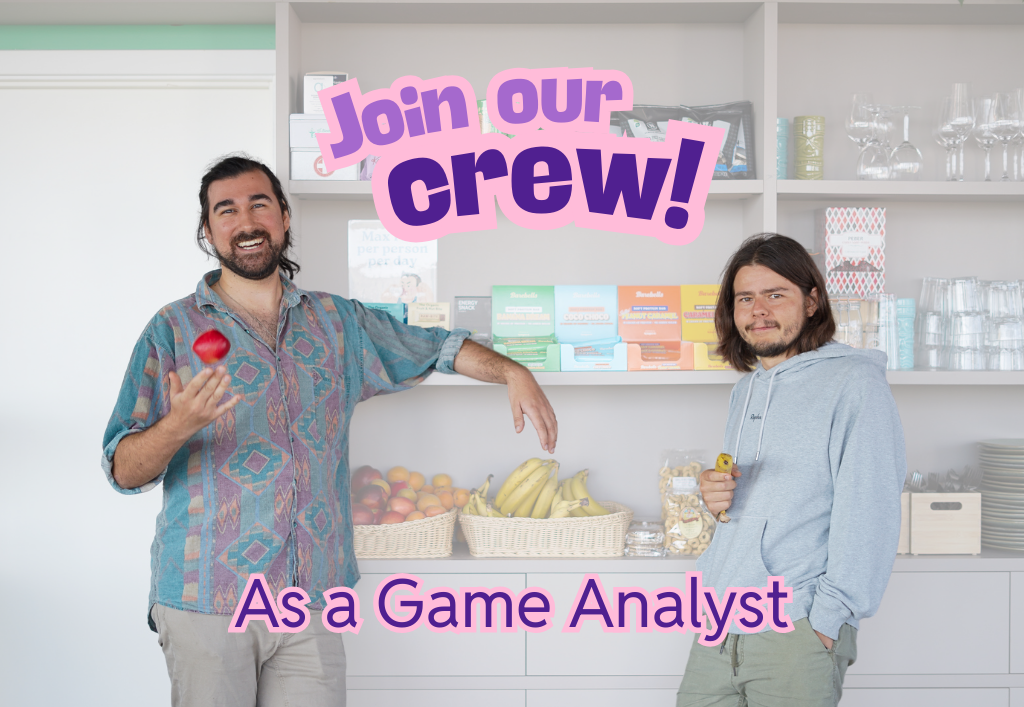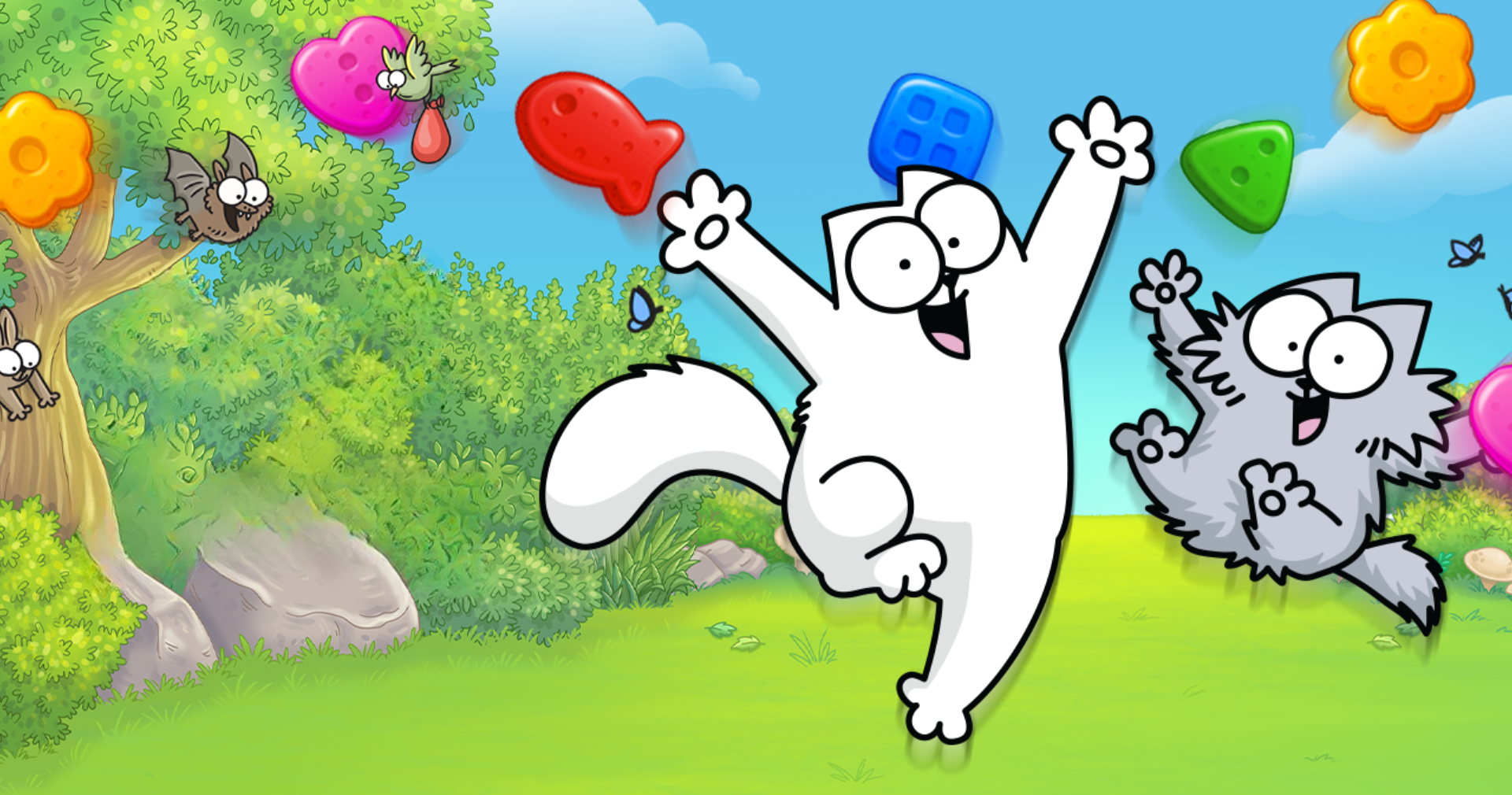Level-up your data skills with Game Analytics
What makes game analytics different?
In the world of mobile gaming, analytics play a crucial role in defining new product roadmaps. In contrast to many other industries where data is gathered from ‘flattening’ the world into workable data which can reduce the scope of what is possible to monitor, we have the luxury of being able to track everything within our games. For game analysts, this increases the possibilities for exploration and offers a much more holistic perspective of our products. These are just some of the reasons why Martin and Onur, our Game Data Analysts, believe game analytics is so interesting.
Taking the user perspective into account is a key part of game analysts’ work – we have a wide variety of users both in terms of their skill-set and playing intentions. We have players who enjoy more challenging puzzles and play a huge amount of levels each day, but also inexperienced players who are opening our game for the first time, or even trying out a mobile game for the first time in their lives. All of these different user perspectives push our analysts to take a deep dive into game dynamics and into considering different analytics points. It is important to clarify here that this is of course keeping complete user privacy – our focus is on tracking what our players DO and understanding how they PLAY.
“Having this analytics sandbox allows us to get very creative,” Martin explains, “We can pretty much gather any hypothesis and run with it. In other industries, that’s not always possible. On top of that, we have millions of users, which means that we have access to huge amounts of data. This allows us to get very reactive in our work.”
The ability to gather loads of data and to gather it quickly, allows us to move fast in shifting things like our in-game economy or to get input on new features we’re developing. When the team moves so fast, they can make a real impact on the products. “We are a big part of the company and the decisions that are being made. We want to ensure that we are always working in a very data driven way,” adds Martin.
A holistic view of our products
Within our analytics, we can track step-by step what our users are seeing and doing. We can see how they interact with individual levels, tasks, events, features and offers. Do they click out of different screen views? What things do they accept, which ones do they deny? What is the order in which they receive offers and what impact does this have on their purchasing habits? When they get into the game, what is the first thing they see? What is the last thing they do?
Our analysts therefore work with a wide range of hypotheses. They come up with many of them through their own interaction with the game or project they’re supporting. Onur shares an example: “Recently, whilst playing Lily’s Garden, I set the hypothesis that a different placement of a particular button would make me want to play another level. And so I set up the analysis and designed an A/B test, to see whether my theory holds true in real life. The best thing is that I could see the results very fast – we have a wide user base and so significance is achieved quickly, particularly compared to other clinical trials.”
This ability to track everything in real-time creates variety for our analysts in how they use the data and in the types of tasks they get to do. “As data analysts, we do not sit in a separate room somewhere in the building, filling in spreadsheets. We are on the floors, sitting directly with the teams, whether that’s supporting individual games or marketing teams, and helping them work in a data-driven way,” explains Martin.
Analytics impact on every step of the way
It is our ambition at Tactile to be as data-centric as possible. Our analysts are not just “SQL Monkeys” – they are a key part of every step of the way, from ideation to shipping and even LiveOps, balancing and marketing. Data benefits the entire production pipeline. On top of this, they help ideate on the product side, they have a hand in the design aspect, they help set-up A/B tests, analyse results and help teams drive key takeaways. They’re completely intertwined in all of our projects and so their say really matters. “People will listen to your opinions,” says Onur, “and you can very quickly see the impact of the changes which were applied because of your findings.”
This is especially true when working on a brand new game. Martin started off as a product analyst on our biggest game, Lily’s Garden, which is a great starting point for someone joining the gaming industry for the very first time. However, as Lily’s Garden is an established game, the approach to making changes is different compared to a new game. Lily’s Garden has a large group of long-term players who enjoy the game as it is and it’s important to not change it too much, so as not to let them down in terms of their player experience. In a new game, the product itself and player experiences are still being refined and shaped, which means that players are expecting more changes to come.
The opportunities and challenges of a new game project
After a couple of years on Lily’s Garden, Martin took the opportunity to join one of our newest game projects, Simon’s Cat Match, which was already in production, but not yet fully released.
Having a data person on a new game as early on as possible in its development cycle is really important for two key reasons; one, it helps to set the foundation for analytics on a wider scale and two, it allows the team to keep moving fast and stay data-driven whilst doing so. Martin elaborates: “This means that we’re able to use data to validate big risks and be confident that the changes we are making to the game are positive improvements. We’re a small team, but our ambitions are big and we want to keep growing our game, so it’s crucial for us to stay agile.”
A brand new game is a blank slate and therefore presents a lot more possibilities, but this also comes with more challenges. As the only analyst, Martin has been a big part of the team by supporting and enabling all the changes that are being made in the game. Every new feature, every adjustment and change needs to be tracked and tested properly before it gets released to the entire player base. “This is challenging because of the quantity of the users and also because of the in-game balancing, when we make several changes at the same time,” explains Martin, “Moving fast also means not being able to A/B test everything. This is when methodology and scientific rigor become even more important.”
In his day-to-day, Martin works closely with the game’s Product Manager, as well as other area leads (for game art, animation, level design, programming and QA). As a team, they do a lot of spitballing and brainstorming, so everyone is a big part of making decisions. Martin specifically is involved in everything from designing new features, design tweaking, providing data on existing users, assisting with solving problems, bugs and investigating crashes. He has a real impact on the final look and feel of the game.
Supporting the core of our games
Onur, just like Martin, started on Lily’s Garden product team, but recently moved to working with our Gameboard team. This team is responsible for everything relating to our core gameplay (match-3 puzzles), in particular level design.
Making match-3 puzzle games is our core business and so it’s key for us to ensure that our game levels are both appealing and challenging for all the different user bases we have. “The insights from data are an irreplaceable part of this process,” explains Onur. In his work, he collaborates closely with Product Managers, Level Designers and Gameboard Artists, who are the main drivers of what our users are experiencing in the game.
When it comes to Level Design, Onur needs to support the team with a holistic analysis at all times. “Working with levels has so much depth, it’s almost like working on another game in itself,” adds Onur. What he means by this is that we need a lot of visibility in order to make our levels both challenging and visually appealing – we need data on how our users are progressing through levels, how they are navigating within the levels, which actions they’re taking and how they’re interacting with other parts of the game (such as events). We are also interested in observing different player behaviours, for example whether they are getting disinterested or quitting the game after a certain point. “On top of this, there are things that need to be reworked, design decisions that need to be made and adjusted, and reward structures which need to be established. Analytics needs to stay on top of this at all times,” concludes Onur.
The impact of a strong analytics function
Being so involved in every part of the business, from product development, to core gameplay and even marketing – the impact of our analytics team is huge.
For Martin, the biggest impact in his work comes from driving people towards making decisions based on data, not hunches. “Or at least, to have them use data to confirm or disregard hunches,” he says. “It’s really rewarding being able to reinforce decision making and to see something in the game that you had a direct impact on.” For Onur, this impact is the biggest motivator. He explains: “Trends change so rapidly. A tiny change on the economy side or within another side of the game can create an adverse impact on the trend you’ve been following. This is why it’s so important to detect these things and problem-solve quickly.”
But the impact goes beyond just recommending a change on the feature and seeing it come to life.”Games are so important these days – they’re a huge part of people’s lives and they bring joy to people. It’s truly amazing to be a part of that,” Martin wraps-up perfectly.

We’re hiring! Come grow with us 🌱 (link is valid until role closes)










